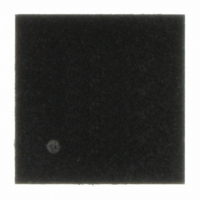L5983 STMicroelectronics, L5983 Datasheet - Page 9

L5983
Manufacturer Part Number
L5983
Description
IC REG SW STEP DOWN 1.5A 8VFQFPN
Manufacturer
STMicroelectronics
Type
Step-Down (Buck)r
Datasheet
1.L5983TR.pdf
(43 pages)
Specifications of L5983
Internal Switch(s)
Yes
Synchronous Rectifier
No
Number Of Outputs
1
Voltage - Output
0.6 ~ 18 V
Current - Output
1.5A
Frequency - Switching
250kHz ~ 1MHz
Voltage - Input
2.9 ~ 18 V
Operating Temperature
-40°C ~ 125°C
Mounting Type
Surface Mount
Package / Case
8-VFQFN, 8-VFQFPN
Power - Output
1.5W
Output Voltage
3 V
Output Current
1.5 A
Input Voltage
2.9 V to 18 V
Switching Frequency
220 KHz to 275 KHz
Operating Temperature Range
- 40 C to + 150 C
Mounting Style
SMD/SMT
Duty Cycle (max)
100 %
Low Dropout Operation
100 % duty cycle
For Use With
497-6386 - BOARD EVAL FOR L5983
Lead Free Status / RoHS Status
Lead free / RoHS Compliant
Available stocks
Company
Part Number
Manufacturer
Quantity
Price
L5983
4.1
Oscillator and synchronization
Figure 4
constant frequency clock. Its frequency depends on the resistor externally connected to the
FSW pin. In case the FSW pin is left floating the frequency is 250 kHz; it can be increased
as shown in
To improve the line transient performance, keeping the PWM gain constant versus the input
voltage, the voltage feed forward is implemented by changing the slope of the sawtooth
according to the input voltage change (see
The slope of the sawtooth also changes if the oscillator frequency is increased by the
external resistor. In this way a frequency feed forward is implemented
keep the PWM gain constant versus the switching frequency (see
expression).
The synchronization signal is generated on the SYNCH pin. This signal has a phase shift of
180° with respect to the clock. This delay is useful when two devices are synchronized
connecting the SYNCH pins together. When SYNCH pins are connected, the device with a
higher oscillator frequency works as master, so the slave device switches at the frequency
of the master but with a delay of half a period. This minimizes the RMS current flowing
through the input capacitor (see the L5988D; 4 A continuous (more than 5 A pulsed) step-
down switching regulator with synchronous rectification, datasheet).
Figure 4.
The device can be synchronized to work at a higher frequency feeding an external clock
signal. The synchronization changes the sawtooth amplitude, changing the PWM gain
(Figure
minimize the change of the PWM gain, the free running frequency should be set (with a
resistor on the FSW pin) only slightly lower than the external clock frequency. This pre-
adjusting of the frequency changes the sawtooth slope in order to render the truncation of
sawtooth negligible, due to the external synchronization.
5.c). This change has to be taken into account when the loop stability is studied. To
shows the block diagram of the oscillator circuit. The internal oscillator provides a
FSW
FSW
Figure 6
Oscillator circuit block diagram
by the external resistor connected to ground.
Generator
Generator
Clock
Clock
Doc ID 13005 Rev 7
Figure
Synchronization
Synchronization
Generator
Generator
5.a).
Ramp
Ramp
Clock
Clock
Clock
Section 5.4
Functional description
(Figure
SYNCH
SYNCH
Sawtooth
Sawtooth
5.b) in order to
for PWM gain
9/43













